Hi everybody! Guess where we are now? Ha ha, we got absolutely inspired by Bulgaria. So this morning without planning so much, we just took the bridge that connects Bulgaria (Vidin) to Romania (Calafat) and we crossed it! We are in Romania, guys!
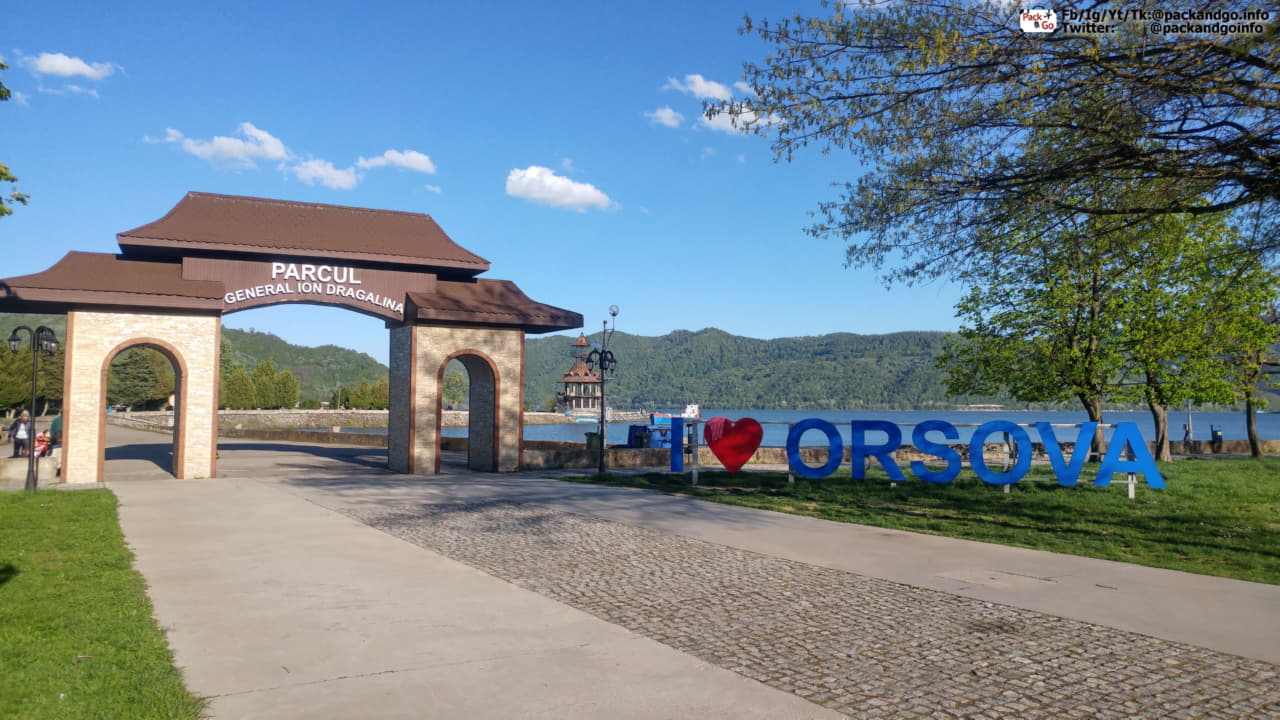
A great day was kicked off by an error.
We decided to keep following the great Danube. It’s massive and beautiful, a good reference not to get lost! Besides, we saw on the Internet some pics of a very scenic place called “The Iron Gates”. We got very curious, especially about a picture that showed the head of a bearded man carved on a big rock in the Danube. The images were great. We checked the location based on the website information, and we realized we were approximate, two hours and a half from there. So we set the place on the GPS and we drove in that direction. To find that head became our main goal this day!
Driving along the Danube was a great decision. The views are amazing! But after two hours of driving, we started looking for the head on the rocks and there was nothing. We kept going until we finally saw a sign mentioning “The Iron Gates”. We drove a bit more and we saw the area. Guys, the Danube is massive and you have to see it with your own eyes!
From the place where we parked, we saw Serbia on the opposite bank of the river. We were happy with the view but still, there was no head around. We didn’t quit! We kept driving even though we had a feeling that something was wrong. There was nobody around so no chance to ask, then we kept driving. Suddenly, the police stopped us. It was hard to communicate. We didn’t have a common language. But after some minutes of nerves, we got it. We were really close, only a few meters, to cross to Serbia through a forbidden place. Fortunately, we managed to explain why we were there. The police (and we) relaxed. We sweated, guys! Then, mostly through signs, they showed us the error. We were looking for the head in the wrong place. “The Iron Gates” was in front of us (the south part). But the head lives somewhere around a Romanian place called Orsova (Orșova). We were approximately 13 to 15 kilometers away from it.
We got the wrong information on the website we checked but we didn’t double-check. Usually, we do it. Anyway, we got excited about traveling and we forgot this very basic rule.
What is “The Iron Gates”?
“The Iron Gates” is a gorge living on the Danube. It’s located on the border between Romania and Serbia. There are two hydroelectric power stations in this gorge, Iron Gate I, considered the largest Danube dam, and Iron Gate II. They were the result of a joint venture between the Yugoslavian and Romanian governments that started in 1964. The project was completed in 1972. If you like to see giant human constructions, you can take a look at these big dams. This is the first we saw because we were driving from Vidin, Bulgaria to The Iron Gates.
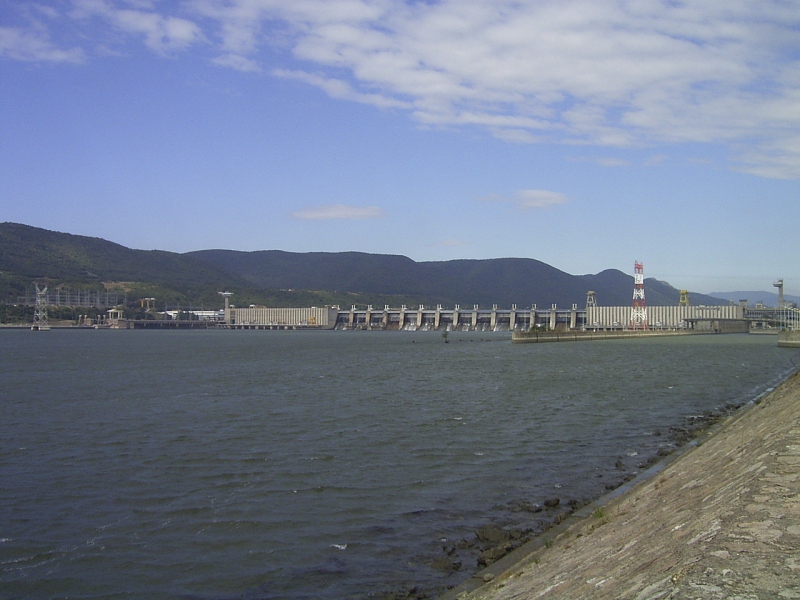
Exactly there, the river divides the northwestern foothills of the Balkan Mountains from the southern Carpathian Mountains. As you can see now, the gorge is shared by two countries. On the Serbian side of the gorge, you will find the Derdap National Park which is a natural protected area. But if you are, like us, in Romania, this side of the gorge is the Iron Gates Natural Park (Parcul Natural Porțile de Fier, in Romanian).
It’s a big park, guys! 18 protected areas are included within it. Vegetation is dense and at least 205 types of birds and 34 mammal species live there. It’s pointed as the second largest in Romania. It’s a great natural area. Take your map and check these references: it goes from Socol (west) to Drobeta-Turnu Severin (east), and the Mehedinti Mountains and Banat Mountains (north). Impressive, right?
One note for you to consider. We didn’t see public transportation in this area. Buses were heading directly to Orșova and towns around. The rest of the vehicles were big trucks coming and going between Romania and Serbia, and regular cars. If there’s an alternative we missed, share it with us!
Where is Orsova (Orșova) and how to get to Orsova?
Orșova is a Romanian port city, located on the Danube river. Coming from the South as we were driving, Orșova is above “The Iron Gates”. There, the Danube meets the Cerna river. And based on our recent experience, this city is a very nice spot to relax and the most recommended starting point to explore the different gorges and nature around.
Distance and time references based on Google Maps:
- Craiova (Romania) to Orsova, 143 km (shortest route), 2 hours driving.
- Timisoara (Romania) to Orsova, 204 km (shortest route), 3 hours driving.
- Vidin (Bulgaria) to Orsova, 240 km (shortest route), 4 hours driving.
- Belgrade (Serbia) to Orsova, 239 km (shortest route), 4 hours driving.
- Bucharest (Romania) to Orsova, 380 km (shortest route), 5 hours driving.
How to move around Orșova?
Once you arrive in Orșova, either by bus or car. You can easily move around the city on walking. It’s not hard and it’s pleasant. Of course, there’s public transportation and you can see mostly locals using it. But honestly, for tourists, the most interesting area to explore is not massive and it’s not hard to walk. It’s up to you.
Now, talking about all the different things you can see in Orșova’s surroundings, there are two ways to see them. You can take a boat there or you can drive your car. Going by boat you will be closer to some things like the big and small Kazan gorges, Trajan’s plaque, the Face of Decebalus, Mraconia monastery, Veteran grotto, Ponicova cave, and Széchenyi memorial plaque. The others are big enough so you can see them well from the road if you go by car. It’s just about deciding the point of view you want to enjoy.
In Orșova you will easily find the pier where you can take a boat. Prices depend on the route you pick (how long the trip is). Therefore, the number of attractions you will see.
The boat trip can be long, around 15 to 20 kilometers. By car, you will drive a long distance to visit the attractions. We saw that boats leave with a minimum number of people. If there are fewer people, you will have to wait for the minimum to be covered and that can take minutes or hours, based on the season you go. Drivers will offer you to pay a higher fee if you want to leave immediately. Considering these factors, the fee per person can go from 15 to 70 RON. Prices are shown on the pier. Be careful with fake promotions that turn out to be more expensive.
In our case, when we look for a boat, the pier was already closed. We were told they closed earlier than usual because there weren’t many tourists. So we explored by driving and we reach everything. The next day, only to experience the Danube and to pass through the gorges by water, we took a short boat trip. We liked it!
What to do in Orșova?
Orșova is ancient and full of history. It seemed to us a quiet and nice city to relax in. Most sites on the Internet consider it only as a starting point to enjoy the surroundings but barely talk about Orșova itself.
In our opinion, Orșova can be a nice stop for a day trip or for relaxing for a complete weekend. You can easily spend a day here and explore the surroundings the very next day or vice versa. There’s accommodation available in the city and it’s cheaper than the one you can get in the surroundings (along the Danube). The city has a quiet vibe that for sure gets a bit more vibrant and noisy during the high season.
The attractions in the city that we enjoyed the most were the promenade and the park.
Subscribe to our YouTube channel!
Orsova’s promenade.
The great Danube is a big icon of Orsova. The presence of the river is massive and a big part of the city’s landscape. When we arrived, the first thing we found was a long and nice promenade. It’s wide enough to have a nice walk while enjoying the Danube’s view. There you will find the pier and all the information we already mentioned about routes, attractions, and prices. There are restaurants on the way so you can improvise some stops to eat Romanian food, and get a coffee, or ice cream.
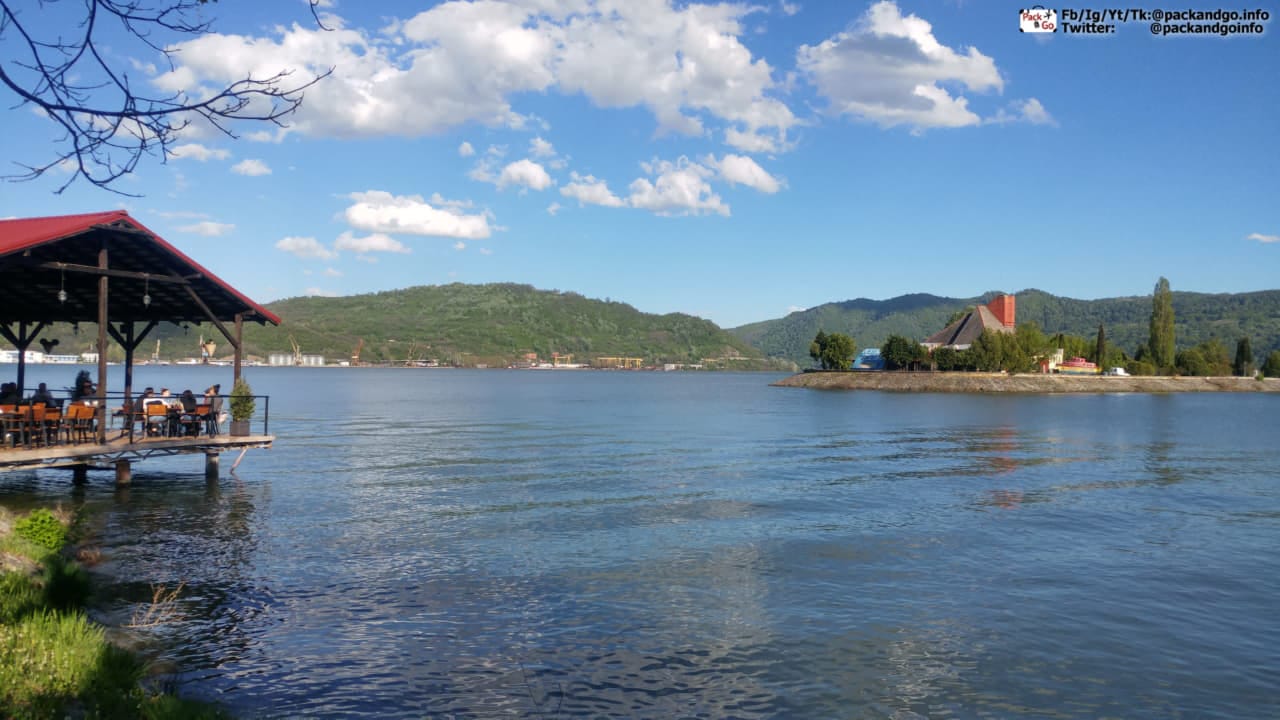
Orsova’s park.
Being a city, of course, asphalt, buildings, houses, and shops are present in Orsova. But the city has a green and very pleasant side. Walking on the promenade naturally leads you to the park. There you can see statues, playgrounds, rental bicycles, nice spots to enjoy different views of the Danube, and long and nice areas for walking or exercising. It’s very relaxing and quiet. After having ice cream, we took a nap on the green, fresh grass of this park. There you will find the big and colorful sign of Orsova to take a postcard picture.
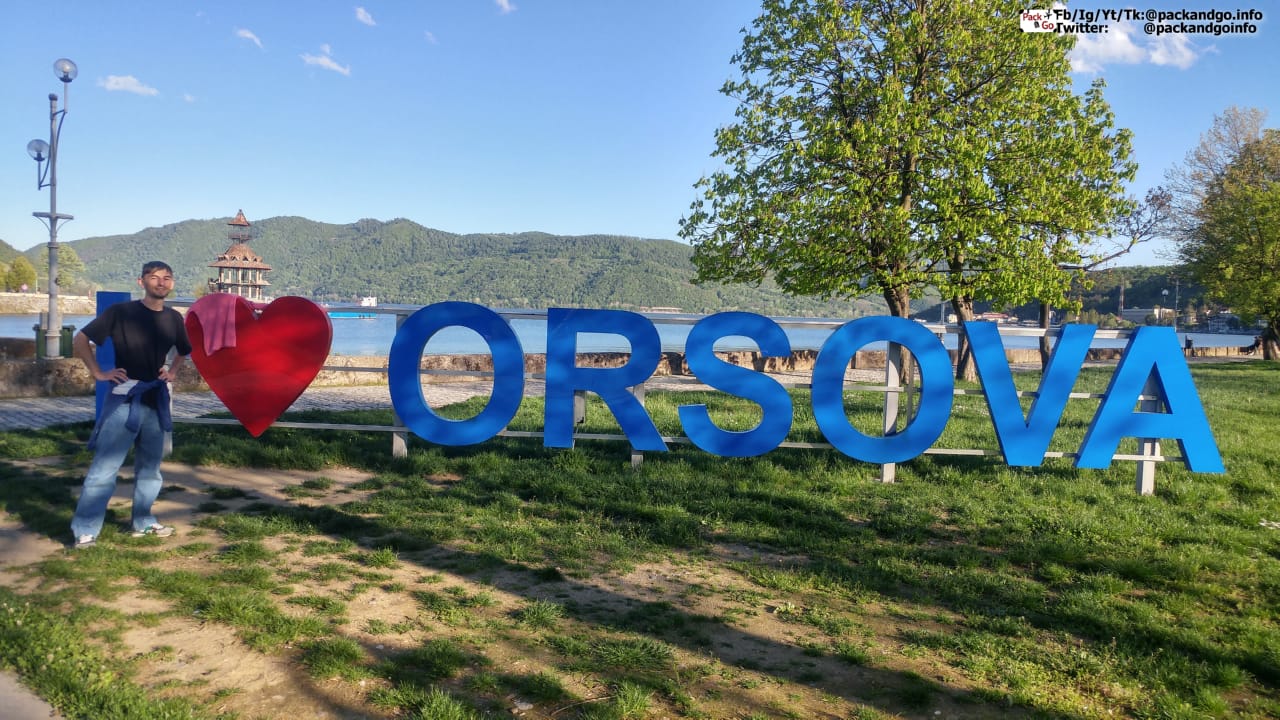
What to see in Orșova's surroundings?
The list is as long as the Danube!
Tabula Traiana or Trajan’s Plaque.
It’s a relic, a memorial plaque built in a river gorge. The Roman Emperor Trajan ordered its construction. Emperor Trajan was an enemy of King Decebalus. The Tabula Traiana or Trajan’s Plaque was important to commemorate different events. The march of the Roman troops to Dacia. The Roman Empire’s victory over the Dacian kingdom after the Second Daco-Roman war (105-106). And the end of a Roman military road (2nd century). Approximately, 40 kilometers of road remains are still visible along the river (holes in the rocks used to place beams for fixing a wooden bridge).

We were told that ten plaques were carved in this gorge but only Trajan’s was preserved. Drawings of the other four plaques exist and they date back to the 18th and 19th centuries. Tabula Traiana or Trajan’s Plaque is 1.75 meters (height) per 4 meters (length). The plaque is fixed on rock and you will see two dolphins, an eagle, and an inscription.
As you can imagine, weather conditions have badly affected the plaque over time.
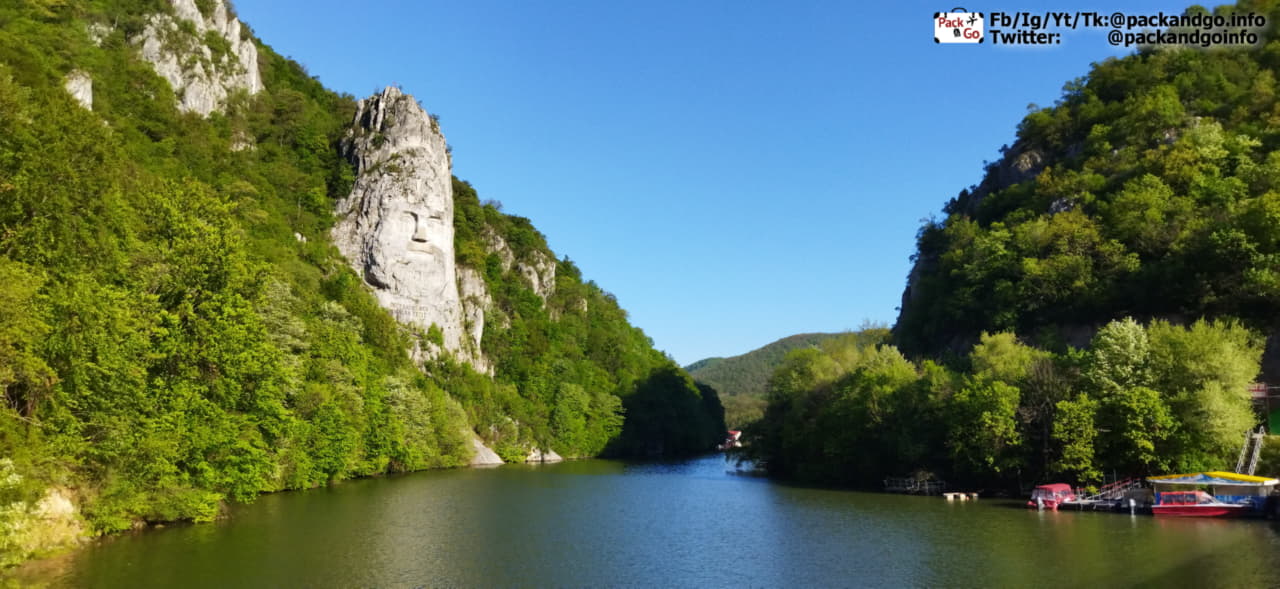
Chipuil Lui Decebal or the Face of Decebalus.
Yes, guys! We got it! Finally, we managed to reach our original goal and it felt very nice. The head is impressive just like the landscape that frames it. The view can’t be better, the Danube plus the Carpathian Mountains, and the carved face on the rock of Decebalus.
The creation of the head was Iosif Constantin Dragan’s idea. He directly financed it and Florin Cotarcea was the artist who made it. It’s 25 meters wide and 40.5 meters high, and it’s located close to the Mraconia Bay, 18 kilometers away from Orșova. Check your map and it’s between Eșelnița and Dubova. Something we discovered is that the head is not ancient like other historical treasures in the area. Its construction started in 1994 and it was finished in 2004. Yes, Florin Cotarcea worked 10 years directing the carving with the assistance of at least a dozen of climbers and a ton of dynamite for modeling. Under the head, you will see this inscription: “Decebalus
Rex – Dragan done” (king Decebalus – made by Dragan).
Decebalus was the last king of Dacia. He defended the independence of his country (the current territory of Romania) from Trajan and Domitian, both Roman emperors.
Guys, we looked long for finding the rocky face of Decebalus. When we found it we felt very happy. We visited it in daylight and at night! As we told you before, you can reach this place by boat or by car.
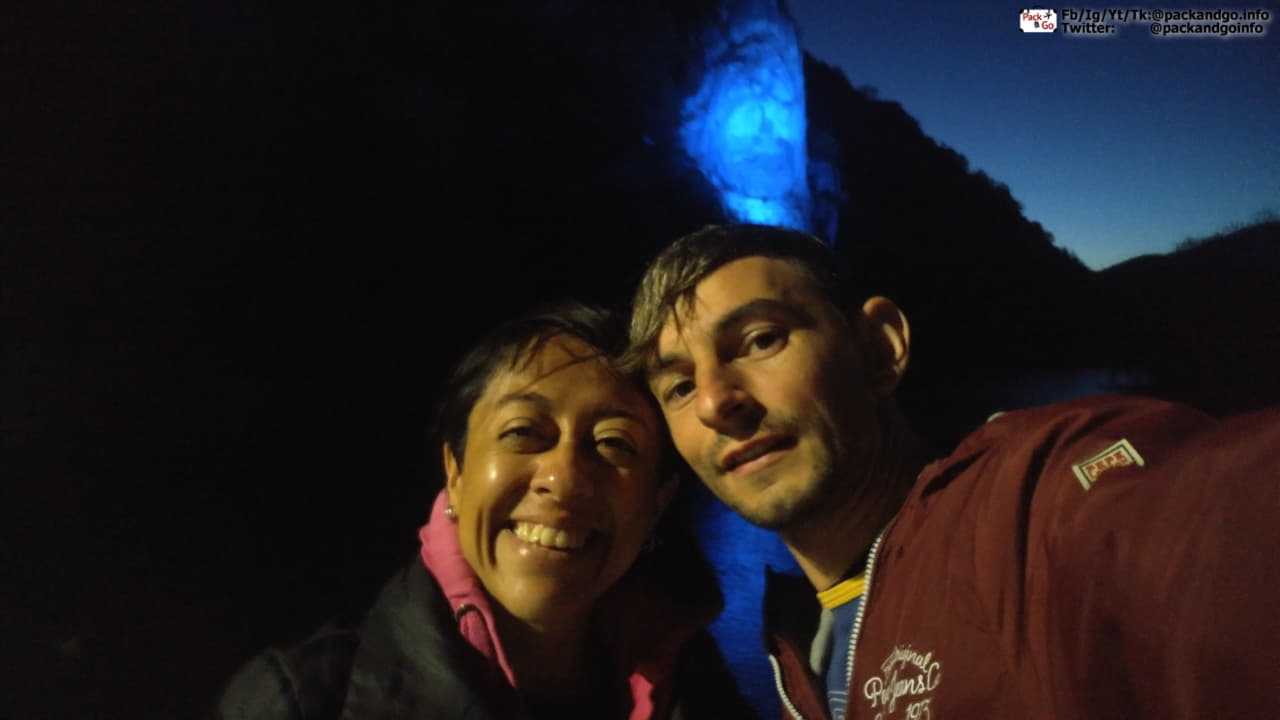
Just a note, Decebalus has been losing his nose over time. Tremors and cracks in the rock are responsible for this. So guys, don’t miss it! Pack and go to see it!
Monastirea Mraconia or Mraconia Monastery.
This monastery is very close to the face of Decebalus (we were driving direction of Orșova - Dubova). So if you saw it already, know you are in the right direction. The monastery was built on a place that previously was an observation-direction point for Danube vessels. The gorge here is narrow so there was no space for two vessels to pass at the same time. We were told, that Mraconia Monastery may exist since the middle of the 15th century. It probably was founded in 1453, destroyed during the Russo-Austro-Turkish war (1787-1792) and reconstructed after 1800, and later, in 1968, demolished during the construction of the first hydroelectric plant, Iron Gate I. The monastery rose from the ashes again in 1995.
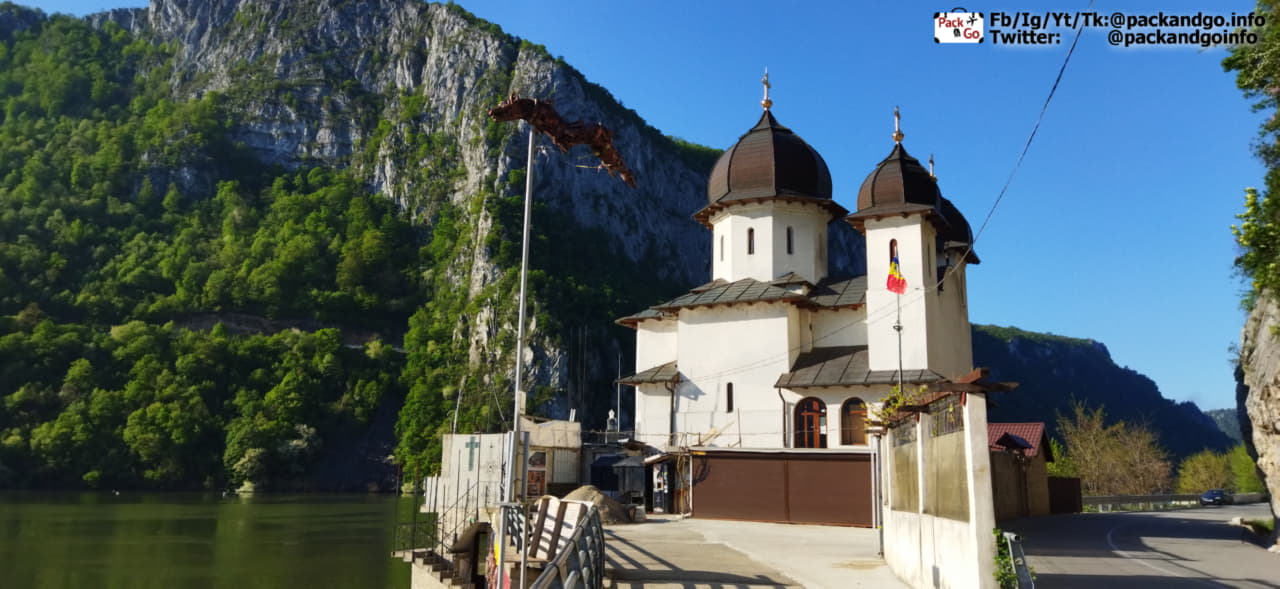
Grota Veterani or Veteran grotto.
It is a grotto (cave) that was inhabited 4,000 years ago. Primitive humans found shelter there. It’s located on the Ciucaru Mare. The Dacians worshiped there the Zamolxis, later the Austrians and the Turks used it as a military place, and nowadays, it’s become a tourist attraction. It’s 24 kilometers from Orșova, after Dubova in the direction we were driving. To have a better view of the grotto, you should go by boat.
Peștera Ponicova or Ponicova cave.
It’s considered the largest cave in the area of Orsova. We were told it’s a bit more of a kilometer and a half and it crosses the Ciucarul Mare and reaches the Danube river. It’s said you can access it by boat or by land. But when we went by boat, the guide only showed us the entrance and got a bit closer to it. He said that to explore it, special permission was required. You should request in advance, pay a fee, and then you also get a guide. If you have accessed or know information about this, share it with us!
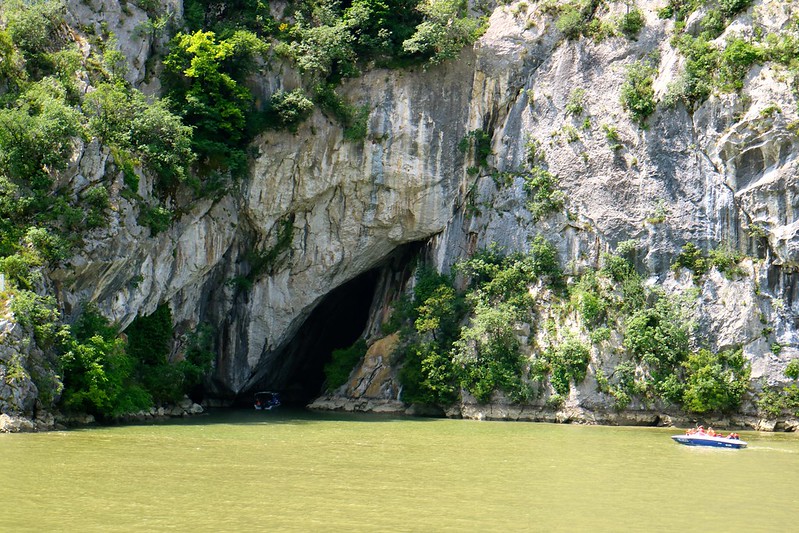
Tabla Lui Széchenyi or “In memory of Széchenyi”.
This is another memorial plaque lying on a rocky wall. It commemorates the beginning of commercial navigation in this zone. You will see it has written the name of Széchenyi István. He was born in Vienna in 1791 but his family became a noble and influential family in Hungary. So he is remembered in Hungary as a great Hungarian. He got into politics, was also a writer, and died in 1860.
He got the idea to make navigable the Iron Gate zone. His contributions were notable. He is also the author of the construction of a road of 122 kilometers useful for transshipping goods. In 1885, the Union of Hungarian Engineers and Builders engraved the name of Széchenyi into the Danube.
Natural trails to explore.
You can also appreciate nature and the beauty of the gorges hiking around. We found two choices during our visit.
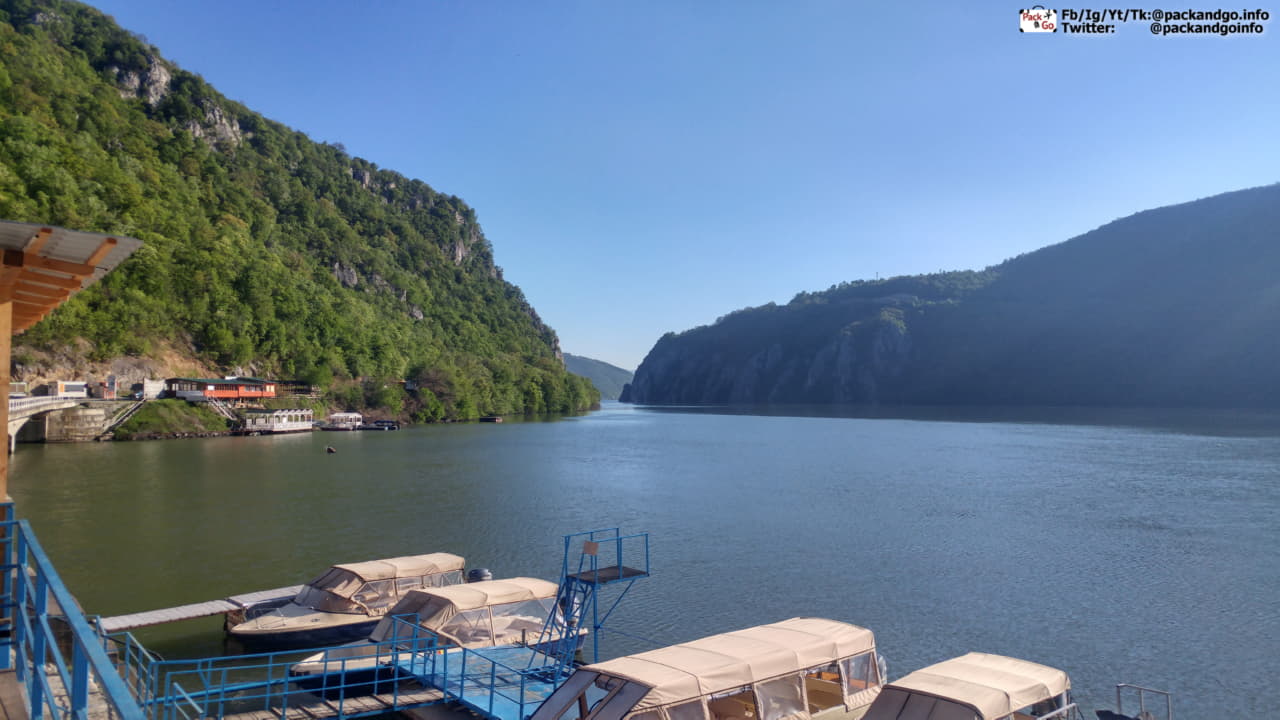
We went up to the Ciucaru MicPeak to have a look at the big Kazan gorges from above. Guys, the view is great! And the hiking was not too hard. The road is well marked. We saw a couple of families with kids, going up without a massive effort. And the great news is, after that short exercise the reward for your body and eyes is great! The starting point for this hike is between Eselnita and Dubova. There’s a sign that points to the beginning of this nature trail. It should take you an hour to reach the top. But it depends on your pace.
You also can go to the Ciucaru Mare Peak to have a view of the small Kazan gorges. The starting point for this trail is just after Dubova. This is another good hike with a similar duration, an hour to get to the top and enjoy the panorama. The road is marked, nature is abundant, and we totally recommend it!
Tri-Kule or the Three Towers.
If you keep driving 20 kilometers southwest from Dubova, you can find Tri-Kule. You will see some towers from the 15th century that were built to defend the area of the Ottomans. We only managed to see a bit of two towers from the road. A local told us that the third is covered by water most of the time. The trees along the road and the Danube make it hard to have a clean view but you can try. This was our last stop following the Danube. But the road keeps going so if you go further, share your discoveries with us, guys!
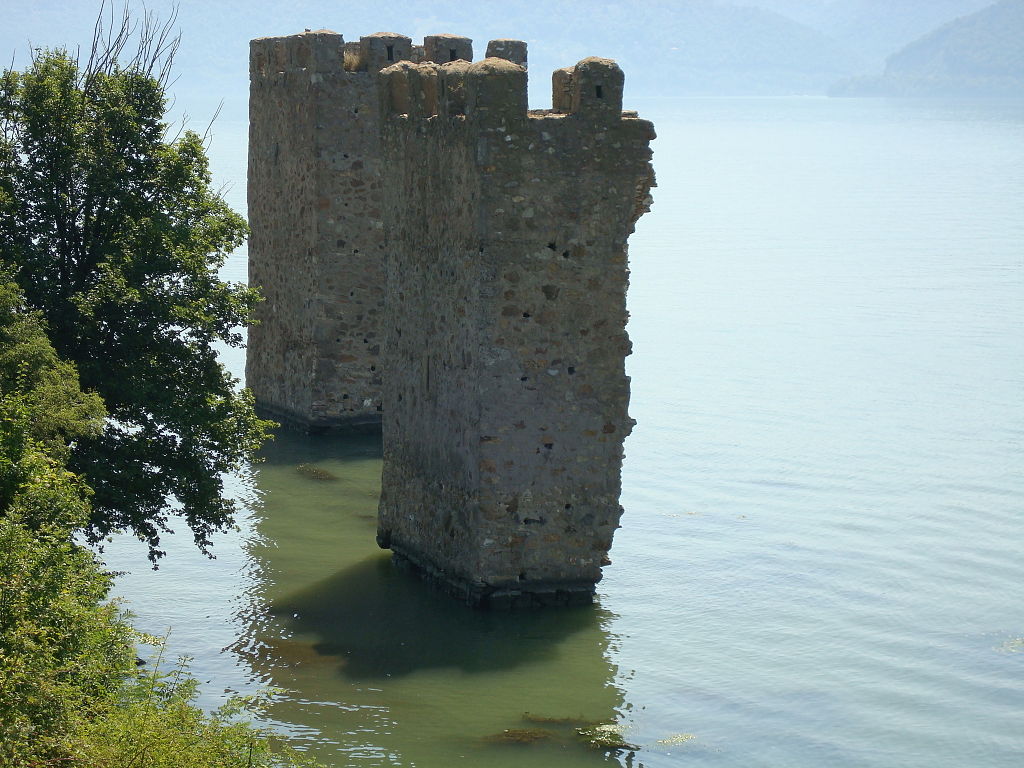
Restaurants with a terrace.

Following the Danube direction, you will find on the road different spots for you to eat something, get a coffee, or a wine. The Romanian food is attractive by itself but to eat whit such a view of the Danube and the gorges makes the gastronomic experience much more attractive.
Where to stay in Orșova?
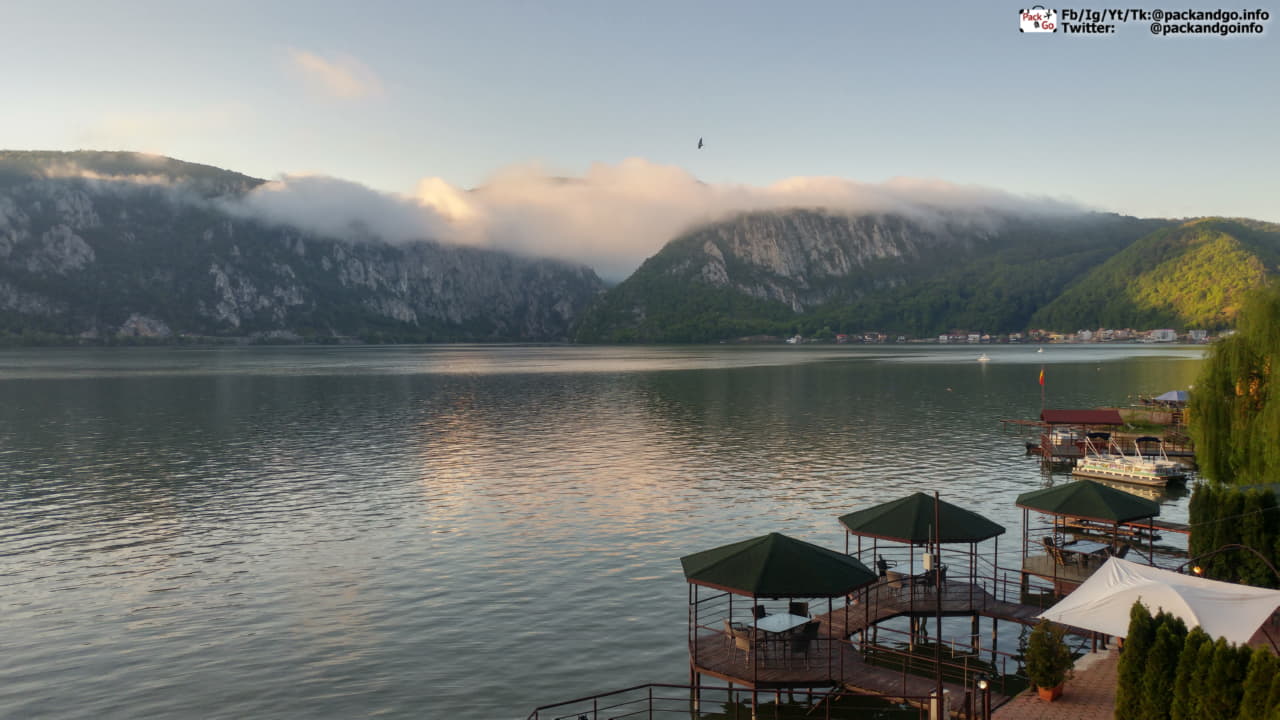
From Orșova to Eșelnița and Dubova there are hotels, guesthouses, and even hostels. Here is a note, we saw a hostel whose premises looked more like a guesthouse. Rooms were not shared but independent. The definition of guesthouse, hotel, or hostel there, is a bit blurry in some cases. But the main point is that you can find comfortable accommodation in the area. Prices in Orșova are lower but they don’t have a panoramic view of the river. The ones with spectacular views of the Danube and the gorges are more expensive. Still, you can find something affordable with a panoramic view. That is what you need! Choose the place that better suits your preferences and budget. But the only must is to be in a place where you can enjoy the view. Prices we saw started from 200 RON per night, in a double room and up.
Conclusion.
Orșova, the Danube, and its surroundings are full of history, ancient traces, and beautiful landscapes. As we told you, we ended up here by mistake but now, we are glad it happened. Orșova, Romania, got into our hearts and memories as a beautiful discovery kicked off by an error.
Guys, follow us, and let’s discover together the next stop of this trip!
Coming up next, the Bigar waterfall (Romania), Timisoara(Romania), and Budapest (Hungary).
We were just in Vidin (Bulgaria), and before that in Belogradchik (Bulgaria).
YouTube @packandgo.info
Facebook @packandgo.info
Twitter @packandgoinfo
Instagram@packandgo.info
TikTok @packandgo.info
